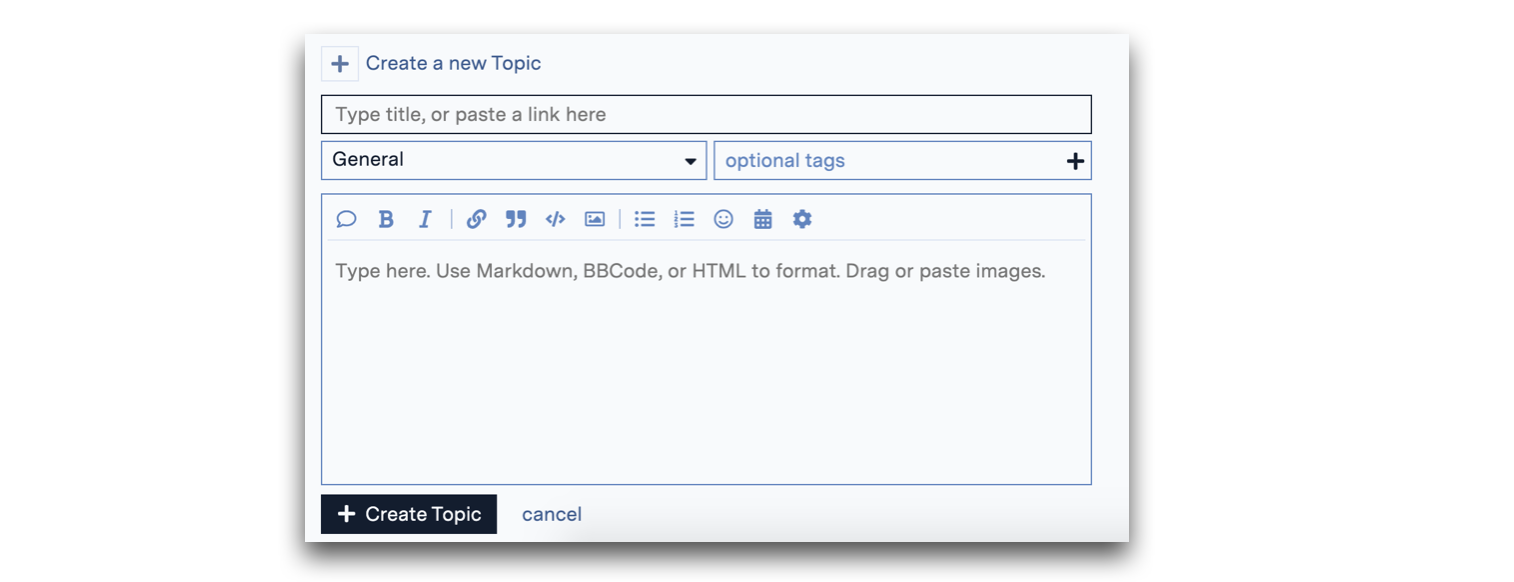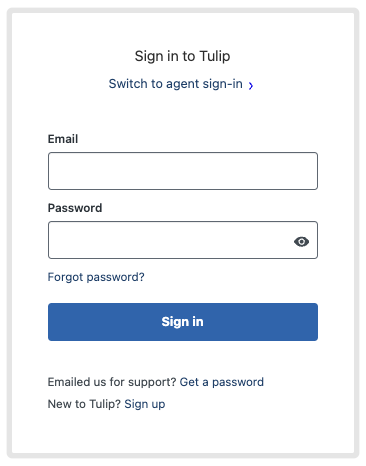This article describes the different ways you can reach out to Tulip Support and what information you should include.
If you are currently experiencing a critical issue that is impacting production, use the request form via your Instance or help center, and indicate the appropriate business impact.
There are multiple ways you can get support for an issue you may have in Tulip.
Tulip Community
Tulip Community should serve as the first layer of support for questions. If you're experiencing an issue that involves confidential information or is urgent, you should submit a Support Request.
Tulip Community is a forum where Tulip Users (including customers, partners, and Tulipians) can post questions, interact with each other, and share interesting things they're doing with Tulip.
Use Tulip Community's Support, Troubleshooting, & App Help category for guidance from both Tulip Team Members and other Users.

Examples of questions best suited for Community
- App Building, i.e. How to create certain functionalities within Tulip?
- Device Compatibility, i.e. What kinds of devices will work with Tulip and how?
- Requests for guidance on building Analytics
- Product features currently available
How to post on Community
Navigate to Tulip Community here, or directly from your instance by clicking on the Question Mark icon and then selecting Community.
- Select the category that best fits your request.
- Create a new Topic.

Contact Tulip Support
When reaching out to Tulip Support, consider the nature and urgency of your request to choose the best avenue.
Before submitting a support ticket, ensure that the issue falls within the scope of Tulip's supported product areas. Refer to our Support Policy, which lists items that are out of scope for tulip support.
There are a few different available options for contacting Tulip Support.
- Create a request via your Tulip instance
- Create a request via Tulip help center
- Reach out via email to support@tulip.co
- Submit a live chat/offline message via your Tulip instance
Information for Support Request
Provide as much detail to allow the team to resolve the request as efficiently as possible. This will minimize back-and-forth messages to gather relevant information. The following information is essential for all tickets to provide necessary information so that Tulip Support Engineers can help resolve your issue.
- Instance and app information
- The full URL of the platform instance
- Links to relevant apps or other components (i.e. connector, table, etc.)
- If applicable, the release version number of your instance (see the Account Settings page) or tulip player (click Player Menu --> About)
- Description of the request
- What is the expected behavior?
- What is the actual behavior?
- Screenshots of behavior, error messages, etc.
- Timeline of events
- When was the behavior first observed?
- How long has the behavior persisted?
- Were there any relevant changes made prior that may be related to the behavior? If so, when did these occur?
- Impact of the request
- How many users are impacted?
- What is the degree of impact?
NOTE: You should only designate issues as Urgent when they pertain to significant interruptions, such as production downtime or scenarios of comparable severity.
Additional Information
For more complex issues such as bug reports, connector function errors, OPCH-related issues, unexpected behavior, and system failures it is helpful to provide more detailed information along with the basic information above.
- Browser Console Logs
Console logs from your browser can provide more detailed insights about the issue. To access the browser (Chrome and Firefox) console for real-time error logs: right-click on the page, select Inspect Element, and then select Console. For more detailed instructions refer to: How to Open the Developer Console.
For Tulip player-related issues, you should provide the player logs. See Capture Player Logs.
- Tulip Player app logs from a local device storage. These store Events, Errors and Debugging logs over a longer time. For Windows these logs are stored in the directory:
%appdata%/Tulip Player/tulip/log
-
On-premise Connector Host (OPCH) logs
For issues related to connectors using your OPCH or the OPCH itself, the logs from that OPCH at the appropriate timestamp are useful for our support team. These logs contain detailed records of events, user behaviors, and potentially critical information for resolving system issues. -
Specific Information for Certain Issues
For issues related to specific features of the platform, dig into the relevant section of our support documentation to first troubleshoot the issue and also obtain necessary logs. Example Documentation:
- Troubleshooting Connectors
- Troubleshoot your Tulip Edge Devices
- Troubleshooting Zebra Printers with Tulip
- How To Troubleshoot the Tulip Player
- How To Troubleshoot Your Barcode Scanner
Remember: The more detailed information you provide, the easier it will be for the support team to understand and address your problem effectively. Include as much detail as possible, even if it seems small. Each piece of information can be crucial in resolving the issue.
1. Support Request via Tulip Instance
Customers have the ability to submit a Support Request ticket directly from a Tulip Instance. This method is best suited for:
- Critical Issue affecting production (ie. requires immediate solution)
- Bug reports
- Questions that involve reviewing confidential information and thus cannot be publicly discussed in Tulip Community
How to Submit a Support Request

- Click the Question Mark icon in the top right of your instance menu
- Select Support Request
- Complete the form, providing as much detail as possible.
- Ticket Type:
- Issue - Use this type to report unexpected behaviors within the platform (expected bugs, performance issues, etc.)
- Question - Use this type to ask questions you may have around the platform or expected functionality
- Task - Use this type to request standard known scopes of work (i.e. version upgrades, application imports, etc.)
- Criticality
- Use criticality to report the business impact the ticket has on your operations. Reserve the Critical level for issues that have direct production impact and require immediate attention.
- Ticket Type:
2. Support Request via Help Center
Tulip's help center offers an alternative to the instance request form by hosting this in a separate location. The help center also allows for users to create new tickets, review their previously submitted tickets, and directly communicate on these tickets.

Logging into the Help Center
Tulip's help center currently uses separate login details from Tulip instances. A separate account will need to be created and you can receive a password or sign up directly from the login window:

How to Submit a Support Request
To submit a ticket, use the following: Support Request Form
Similar to the instance-hosted form, use Business Impact to report the impact the ticket has on your operations. Reserve the Critical level for issues that have direct production impact and require immediate attention.
3. Support Request via Email
Requests for Tulip Support can be sent to support@tulip.co. Follow best practices to ensure requests are handled in a timely and effective manner.
4. Live Chat and Offline Messages
Similar to the form option within an instance, the live chat widget is available to reach out to Support.
- Click the Question Mark icon in the top right of your instance menu
- Select Live Chat
- Add relevant details and submit your message.
Depending on queue volumes, the Support team may show as Offline when selecting the team to reach. Rest assured that offline messages will be read and responded to as soon as possible.


